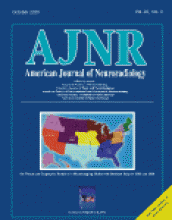The normal processes of the aging brain remain poorly understood, and some degree of memory loss is expected in usual senescence. Approximately 10% of the population over age 70 years will have significant memory loss, and at least half of these cases of dementia will be attributed to Alzheimer disease (AD). AD is perceived as the most common cause of dementia, affecting some 3 to 5 million people in the United States. Described nearly a century ago, the disease is characterized by both clinical and pathologic features. Patients most commonly have subtle memory loss followed by gradual progressive cognitive decline over several years. Positron emission tomography has revealed early metabolic changes in the parietal region. Pathologic studies reveal diffuse atrophy, whereas microscopic studies reveal extracellular accumulations of amyloid plaques and intracellular neurofibrillary tangles. The most significant pathologic abnormality is noted in the regions of the hippocampus, temporal cortex, and nucleus basalis. Genes associated with a susceptibility to development of AD have now been described. Familial AD cases led to the discovery of two presenilin genes, located on chromosomes 1 and 14, associated with early dementia. Another gene related to amyloid was identified in chromosome 21 and is related to excessive deposition of neuritic plaque. An additional gene locus related to sporadic cases was identified on chromosome 19, the Apo E gene. Apo E is involved in cholesterol transport and certain alleles of this gene are associated with increased risk of the development of AD.
While these data would suggest AD represents a specific pathologic disease process, other observations challenge that concept. The population frequency of AD increases with advancing age, reaching 20–40% in those over age 85 years. Some decline in memory is noted in most individuals as aging progresses. The pathologic markers of AD, neuritic plaques and neurofibrillary tangles, are seen in most aged brains. There is a quantitative relationship of far greater numbers of lesions in the AD cases. It has been proposed, then, that AD represents the end stage of the normal aging process.
The article from Ohnishi and colleagues in this issue of the AJNR (page 1680) adds evidence to this discussion. They present data attempting to characterize the regional morphologic changes in normal aging and in AD. The technique uses voxel-based morphometry to assess regional gray matter volumes. The need for spatial normalization limits precise volume determinations, but allows comparisons across subjects. The authors present interesting results demonstrating distinctive patterns of morphologic change in normal aging compared with that in patients thought to have AD. Normal aging was associated with declines in gray matter volume involving multiple areas of frontal, temporal, and parietal regions. Gray matter declines were observed specifically in the hippocampus and entorhinal cortex in the AD cases. The authors suggest that these findings support AD as a specific pathologic disease process rather than an extension of the normal aging process. Indeed, this supports what has become the most compelling position.
The mechanism leading to gray matter loss with aging is not well understood. The aging process also affects white matter, and subcortical changes are common. The current study did not assess subcortical white matter volumes, a very important question in this process. Vascular mechanisms have been implicated in both aging and AD, and decreased perfusion has been correlated with regional gray matter dysfunction. Deep white matter lesions are common with aging and are often attributed to small vessel ischemia. The effect on gray matter from the white matter changes is also poorly understood. Some loss of gray matter function is likely related to the white matter disease. It has been hypothesized that vascular changes affecting small vessels, arterioles, and capillaries, lead to ischemia and gray matter loss and could be causative in the pathogenesis of AD and senescence. This may more easily explain the more diffuse gray matter loss seen in aging than the discrete localization of lesions in AD, although much more data will be needed to establish the contribution of chronic vascular disease to gray matter loss. Studies such as the one by Ohnishi and colleagues may begin to add evidence to this concept. Investigations will be needed to help quantify white matter loss, and techniques for this may need to be developed. These quantitative studies of volume could then be matched to perfusion studies in an effort to understand the pathogenesis of the gray matter loss. MR perfusion, attempting to quantify cerebral blood flow and blood volume, would be crucial additional components to this work. Perfusion could be reduced as either cause or result of gray matter loss, and the sequence must be clarified. MR technology clearly has moved beyond anatomic imaging and provides physiologic information important to understanding this disease.
The issues of gray matter loss are important in normal aging and disease. Studies that can help quantify and localize changes will be powerful techniques, and can be coupled with studies of regional perfusion to further develop our understanding of the processes leading to tissue loss.
- Copyright © American Society of Neuroradiology







